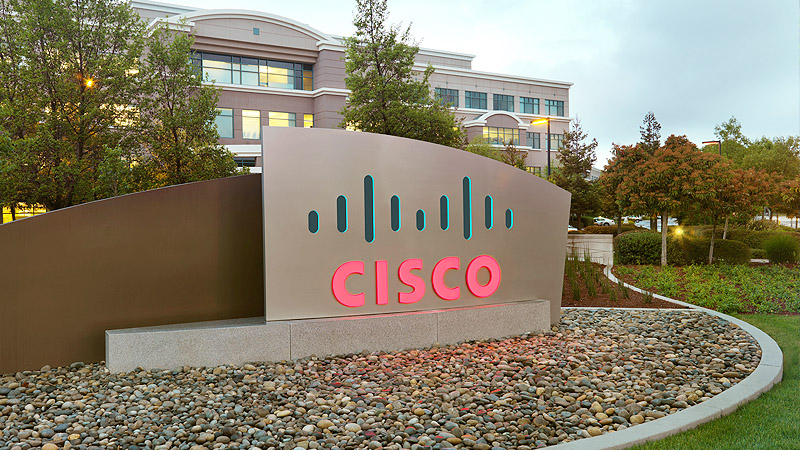NETWORLD+INTEROP, LAS VEGAS, March 28, 1995 -- Cisco Systems, theworldwide leader in LAN switching, today introduced a virtual LAN (VLAN)solution that will give users unprecedented flexibility in designing,modifying and configuring their networks.
Cisco will be the first networking vendor to offer VLAN support acrossits router, switch and ATM product lines. There are three key elements ofthis solution that Cisco will deliver over the next three to six months:
First, Cisco is introducing a complete family of switching platformsthat support embedded VLAN capabilities. These capabilities will besupported on the new Catalyst5000 and Kalpana ProStackswitching systemswhen they begin shipping in June (see accompanying releases), and on Ciscorouters this summer.
Second, Cisco is supporting the development of VLAN communicationstandards to facilitate VLAN interoperability across different LANtechnologies, its routers and switches, and other vendors' equipment.
These standards include the IEEE 802.10 standards for transportingVLANs across common shared-media LAN technologies such as FDDI. Cisco alsosupports ATM Forum-defined LAN Emulation for communicating through ATMfabrics and is leading development at the Forum of the Common Native ModeATM Protocol (CNAP), a distributed method for routing between VLANs.
Cisco is incorporating these VLAN communication standards within theCisco InternetworkOperating System (Cisco IOS) andwill provide full routing functionality across VLANs in the third quarter.
Third, Cisco will continue to deliver on a series of switched networkmanagement applications. In July, the company will introduce VLAN View, agraphically-based VLAN configuration and management tool.
Virtual LANs, administratively-defined groupings based on logicalfunction rather than physical location, are in growing demand for theefficiencies they can bring to large switched internetworks. Containingtraffic with a VLAN reduces broadcast activity across the network,increases workgroup security and minimizes costs associated with moves,adds and changes.
Early VLAN implementations created broadcast domains within a localgroup of switched-media devices. But users of large switched internetworksnow are seeking enterprise-wide VLAN communications.
"Cisco is the only networking vendor that can provide standards-based,end-to-end VLAN communications across the entire enterprise," said JayshreeUllal, director of marketing for Cisco's Workgroup Business Unit. "And ouradvanced switched network management tools enable users to greatly reducethe complexities associated with VLAN configuration, administration andmanagement."
Extending VLANs From the Workgroup to the Enterprise
The Cisco Catalyst 5000 switching system delivers enterprise-wide VLANcommunications by handling up to 1,024 switched virtual LANs without anyswitching performance degradation. These VLANs can be interconnectedbetween switches and routers using three high-speed backbone technologies:100Base-T Fast Ethernet, Fiber Distributed Data Interface (FDDI) andAsynchronous Transfer Mode (ATM).Standards-Based VLANs Facilitate Interoperability
To transport VLAN traffic across a routed infrastructure or sharedmedia, Cisco has implemented the standard IEEE 802.10 protocol, whichconnects VLANs across shared media LAN technologies such as FDDI. VLANcommunication over ATM uses ATM Forum-defined LAN Emulation, a protocolstandardized by the Forum to extend VLANs from switched LANs across an ATMfabric.Optionally, VLAN communication over Fast Ethernet is achieved usingCisco's Inter-Switch Link (ISL) protocol operating at full-duplex speedover copper and fiber connections. This option provides a high-speed,low-investment mechanism for transporting virtual LANs across FastEthernet.
Retaining the advantages of scalability, stability and securityassociated with routed internetworks requires a distributed method forrouting between VLANs that avoids central points of congestion and failure.Toward this end, Cisco is working with the ATM Forum to drive thedevelopment of the Common Native Mode ATM Protocol, which will facilitaterouting between VLANs across a switched internetwork that supportsdistributed routing.
Switched Network Management Applications
Existing network management platforms do not provide the ability toeasily create, check the status of, and manage VLANs across the enterprise.Cisco's new VLANView application manages widely distributed VLANs byassigning physical switching ports to predefined logical groups. Usersattached to switched ports can be added or moved using a simpledrag-and-drop interface. Network managers may assign a user to a VLANsimply by dragging a port out of a graphical view of the switch anddropping it into VLANView's graphical configurator.VLANView provides a graphical view of VLAN "memberships" (all devicesand ports in the VLAN) and link types (e.g., ATM, Ethernet, Fast Ethernet).Port status is identified by the user-assigned VLAN type. VLANconfiguration can be accomplished within the wiring closet using consolecommands. Or, it can be done from the centralized management platformrunning VLANView, using a graphical user interface. In either case, thesechanges are updated by VLANView and can be reported by screen captures andprinted reports.
Availability
VLAN View will be available as a stand-alone application, or integratedwith the CiscoWorks(tm)application suite. Cisco's VLAN agent software also will be available in July as a standard part of the Catalyst 5000system software, and for routers as part of the Cisco IOS.



